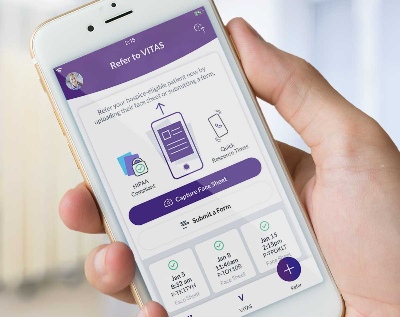By Dr. James Wright, Regional Medical Director and Dr. Heather Veeder, Regional Medical Director
There are two important healthcare trends for patients experiencing heart failure and advanced cardiac disease:
- Progress is being made in referring patients to hospice and palliative care to manage symptoms and support quality of life near the end of life (EOL).
- Many opportunities still remain to ensure that all eligible cardiac patients are offered hospice and palliative care as legitimate treatment options in more healthcare settings and at a point in their disease when they can take full advantage of aggressive, comfort-focused interventions at home—the setting where they prefer to be.
Data from the studies, featured in Circulation: Heart Failure (Dunlay, 2015; Gelfman, 2017), finds that the rate of hospice use among community patients with heart failure increased from 28.6% to 42.2% over a 10-year period (2003-2012); palliative care consultations increased from 10.8% to 43.6% (Dunlay).
Still, the use of EOL healthcare services remained high for these patients, with 82% hospitalized at least once in the final year and 28.4% dying in the hospital. Leading noncardiac reasons for hospitalization were:
- Pneumonia (5.2%)
- Sepsis (4.3%)
- Arrhythmia (3.8%)
These are conditions and symptoms that can be addressed and managed on hospice care. In the second study, median length of stay on hospice was a short 15 days, with 40% dying within a week of enrollment.
Heart failure patients’ health usually deteriorates over months and years, and they often spend a great deal of time in healthcare clinics and hospitals, worrying about when their next cardiac event will happen.
- Will they end up back in the hospital?
- If so, is that really where they want to be?
- If medical management has been maximized and they have no surgical options, what are their care options?
Related: Areas with High Hospice See Lower Readmission Rates
Many of the medical interventions currently provided in the hospital setting can be delivered in the outpatient setting, which could offer a greater benefit to patients and healthcare providers as well. Hospice care offers an alternative treatment option at a point when disease and symptom management are virtually one and the same therapy.
Some of our hospice teams now offer complex modalities at home—inotropes, IV diuretics, respiratory therapy, palliative-focused medications, LVAD support and other interventions—to manage the high-acuity symptoms associated with heart disease and related comorbidities.
Given the choice, heart disease patients should be evaluated for future care based on a simple question:
Which cardiac care option will provide the most benefit?
Will patients benefit from more rounds of medications and surgical treatments, knowing that many of them will end up back in the hospital or intensive care unit and might die there?
Or will they benefit more by aggressive, comfort-focused cardiac care from a hospice team that comes to them over a period of weeks or months, usually at home?
These studies show that physicians are getting better at identifying patients who would least benefit from what we call “terminal hospitalization,” a tendency to continue treating cardiac disease until patients are hospitalized and have a greater chance of dying there.
Referring them to hospice can avoid excessive interventions and recurring hospitalization, allowing them to worry less about their next cardiac event. Healthcare providers can benefit from fewer hospitalizations and reduced costs and burdens of unnecessary care.
Ideally, the next evolution of care for patients with advanced cardiac disease will introduce palliative care earlier in the disease process and in more settings—outpatient clinics, specialty clinics, community health settings, nursing homes, assisted living communities and the like.
Introducing hospice earlier is equally imperative; it can provide patient-centered care, improve quality of life and ease symptom burden, while allowing patients to stay at home or in their preferred setting.
Facilitating goals-of-care conversations earlier in the process, and offering the full range of cardiac care options to patients who are fully aware of their vulnerability, increases the likelihood that their wishes will be honored, their symptoms will be managed, their pain will be controlled and their deaths will occur in the place that feels like home, not in a hospital or intensive care unit.


